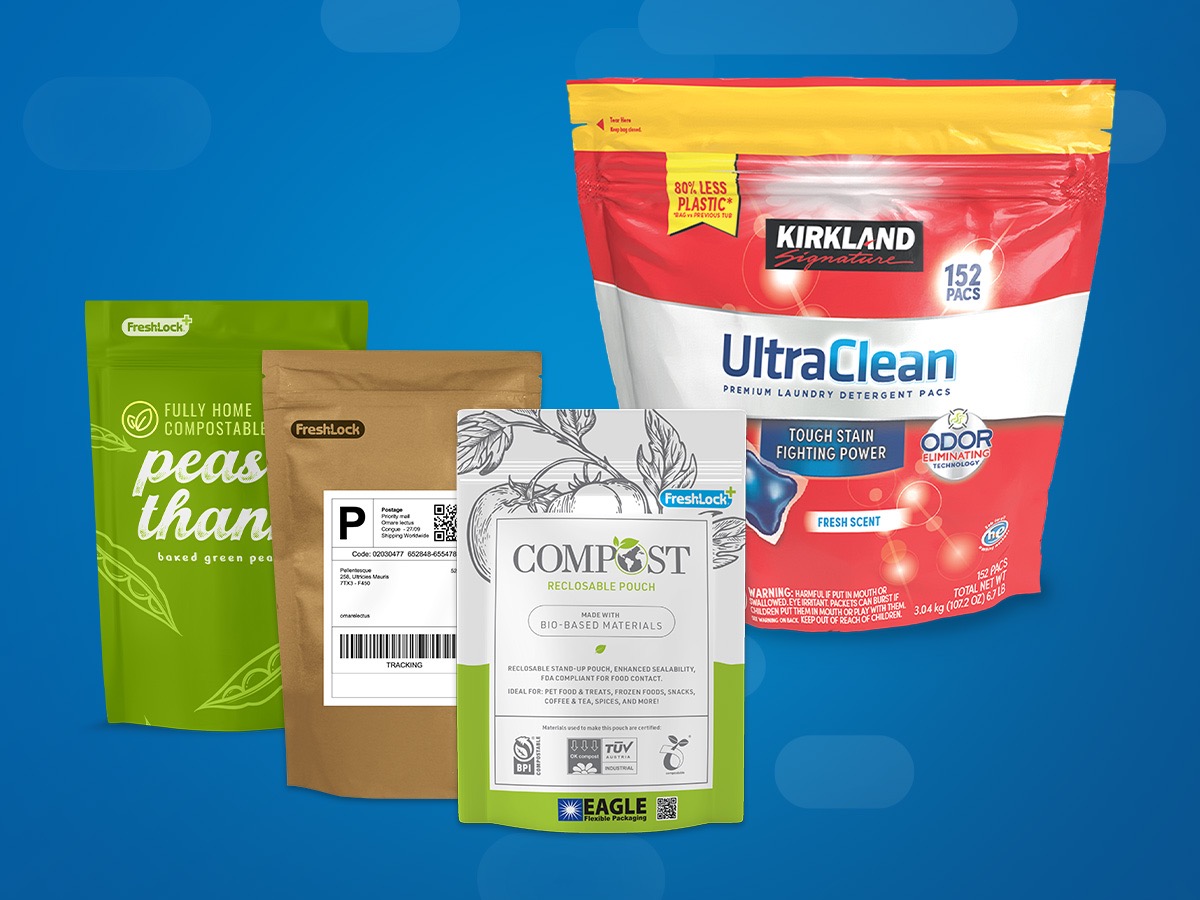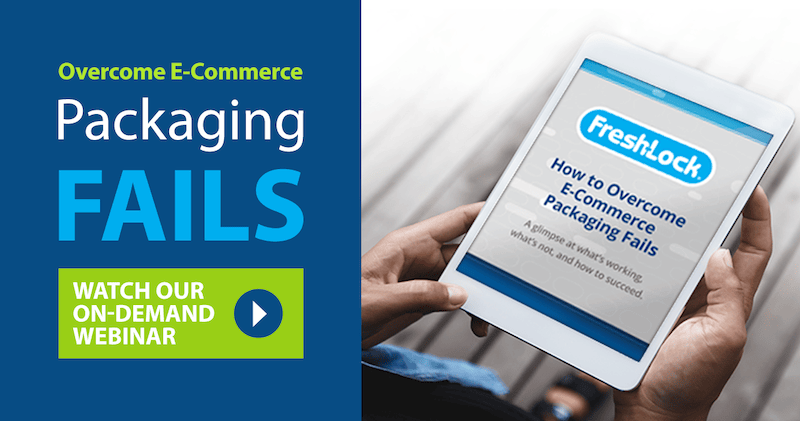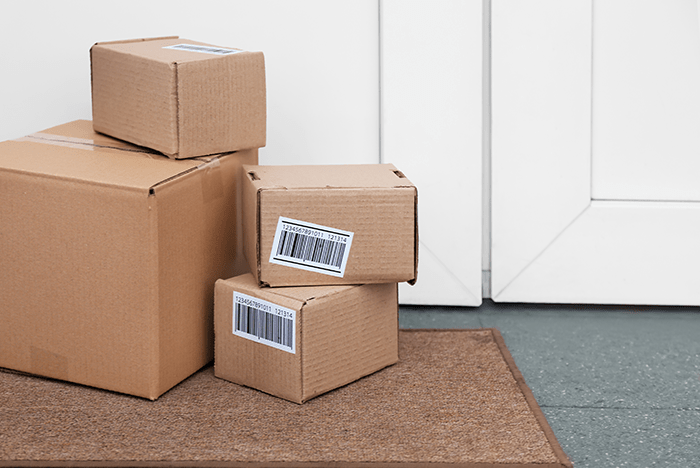
Flexible Packaging and E-Commerce | The Connection and Considerations
Consumer shopping behaviors have undergone a significant shift: last year alone, e-commerce sales grew by 20 percent. The reason? People want the convenience of reviewing options, looking for alternatives, and seeing what others have to say about a product before they make an investment – options that can be unavailable, awkward, or inopportune in a store environment.
Think back five to seven years ago. Did you ever imagine that you would have the option to have a mattress or even a sectional couch delivered (free) to your doorstep in two days (or less)?
Or the opportunity to reorder little odds and ends like dog treats, toothpaste, or cleaning supplies with one push of an Amazon Dash Button?
Or even the possibility of having your grocery list fulfilled and delivered directly by your local market or a meal service?
Times are changing, but one thing remains constant: all these products still require a functional primary package. Big industry players are investing time and resources while changing their strategies to ensure their packaging can withstand the complexities of this alternative supply chain, which has more touchpoints than ever.
A Complex Supply Chain
When it comes to e-commerce, packaging matters more than ever. E-commerce logistics create more opportunities for products to get damaged before they reach the consumer. Instead of heading directly to a brick and mortar store, products are sent to distribution centers, unloaded and loaded from skids, sorted, handled, boxed, and transported to the consumer – potentially in the same shipping box as other products, which may or may not be similar in shape, weight, mass, or durability.
Products are surrounded by bubble wrap, air pillows, Styrofoam, shrink wrap, and packed inside corrugated shipping boxes. Despite these protection measures, products are still showing up damaged. And, when they do, it can be equally damaging to the brand. Consumers not only voice their frustrations online, but brands are charged for repacking, reshipping, and also for any damage to other products in the box.
When your product shows up at a consumer’s doorstep, what does it look like after its journey? Is it crushed, cracked, or destroyed, or has it held up to transportation and handling?
This question is something brands and packaging suppliers around the world are “unpacking.” Extreme protection measures are being taken to keep products safe during transportation – but do these measures need to be taken or does primary packaging need to be changed?
Packaging Considerations for E-Commerce
1. Get to know shipping best practices.
Companies like Amazon follow testing protocols such as the International Safe Transit Association (ISTA) various simulations to understand how a package performs e-commerce shipping. ISTA evaluates primary or secondary packaging’s ability to withstand damage from forces and other environmental conditions. Tests may include drop tests, integrity tests for leaks (for liquids only), vibration tests, and more.
When you understand shipping hazards and the ways experts analyze packages upfront, you can design your packaging to ensure it makes it to the consumer’s doorstep the way it left your facility.
2. Design your packaging for single-parcel shipping.
Since packaging was originally designed to simplify transportation, it makes sense why packaging was designed to be palletized.
“A giant cube of product came straight from the manufacturer and was then moved around on forklifts in distribution centers until it was needed at the retail store,” shares Sealed Air’s product care division president in an article from Packaging Strategies. “The science of pallet shipment and distribution has been perfected over time. There have been multiple generations of technology and robotic systems built to maximize the efficiency of creating pallets and optimizing the warehouses that house those pallets of products down to the square inch.”
The rigorous e-commerce supply chain requires brands to rethink their primary packaging to avoid chargebacks, damaged goods, and brand reputation risks. By designing products for a single parcel, brands are more likely to find success.
3. Think resealable flexible packaging.
ISTA-3A testing, alongside a study from Bemis Company, determined the most typical rigid packaging damage:
- Rigid plastic caps shatter on impact during shipping
- Glass jars can easily crack
- Spray nozzles leak due to vibration and compression during shipping
- Cardboard boxes dent and crush product inside
- Canisters can pop open
Flexible packaging can give with movement and, with thoughtful engineering, can be designed to protect products. Topped with a zipper or a slider, brands can still provide consumers with the convenience they desire without sacrificing packaging appearance.
Instead of thinking about two different types of packages, one for retail and one for e-commerce, brands should consider one package that meets both channels. Flexible resealable packaging can be designed to fit the store shelf requirements while also withstanding e-commerce distribution.
Win in E-Commerce
One of the topics we discussed early in the year was the growth of e-commerce. At Fresh-Lock®, we know this trend is here to stay – especially with data indicating that online sales transactions are estimated to reach $4 trillion globally by 2020. When it comes to rethinking your packaging for e-commerce, we understand that it requires a team of knowledgeable packaging experts.
If you’re thinking about packaging for e-commerce or have other packaging goals, Contact the Fresh-Lock® team online or at 800-265-0750 to find a reclosable packaging option that holds up in shipping and is a functional solution for your product.


 Back to Blog
Back to Blog


